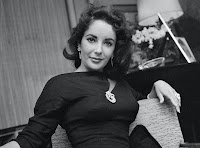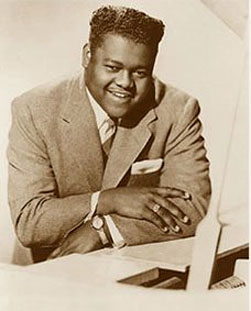"Freedom is never more than one generation away from extinction. We didn't pass it to our children in the bloodstream. It must be fought for, protected, and handed on for them to do the same, or one day we will spend our sunset years telling our children and our children's children what it was once like in the United States where men were free." - President Ronald Reagan
Friday, February 28, 2025
A chat with Felipe Cuello
Hey Jake don’t make it bad
I guess that elections have consequences. Would Jake Tapper have published this book if VP Harris had won the election? Probably not. Nevertheless, we welcome the CNN host to the side that knew that something was wrong with President Biden.
— Silvio Canto. Jr. (@silvio_canto) February 28, 2025
Hey Jake don’t make it bad -…
We remember Mr. Ed, the talking horse (1948-79)

The great talking horse Mr. Ed died in 1979 at age 31. We grew up watching Mr. Ed, although more have probably seen it on reruns. It was a great show and the theme music was super:
“A horse is a horse, of course, of course, And no one can talk to a horse, of course That is, of course, unless the horse is the famous Mr. Ed Go right to the source and ask the horse, He’ll give you the answer that you’ll endorse He’s always on a steady course, talk to Mr. Ed. People yackety yak on the street and waste the time of day But Mr. Ed will never speak unless he has something to say. A horse is a horse, of course, of course, And no one can talk to a horse, of course That is of course unless the horse is the famous Mr. Ed.”
The shows bring back a ton of memories and watching my mother laugh at the idea of a talking horse. We expected a lot of surprises in the US but a talking horse was not one of them.
1966: Remember when Koufax and Drysdale held out for spring training?
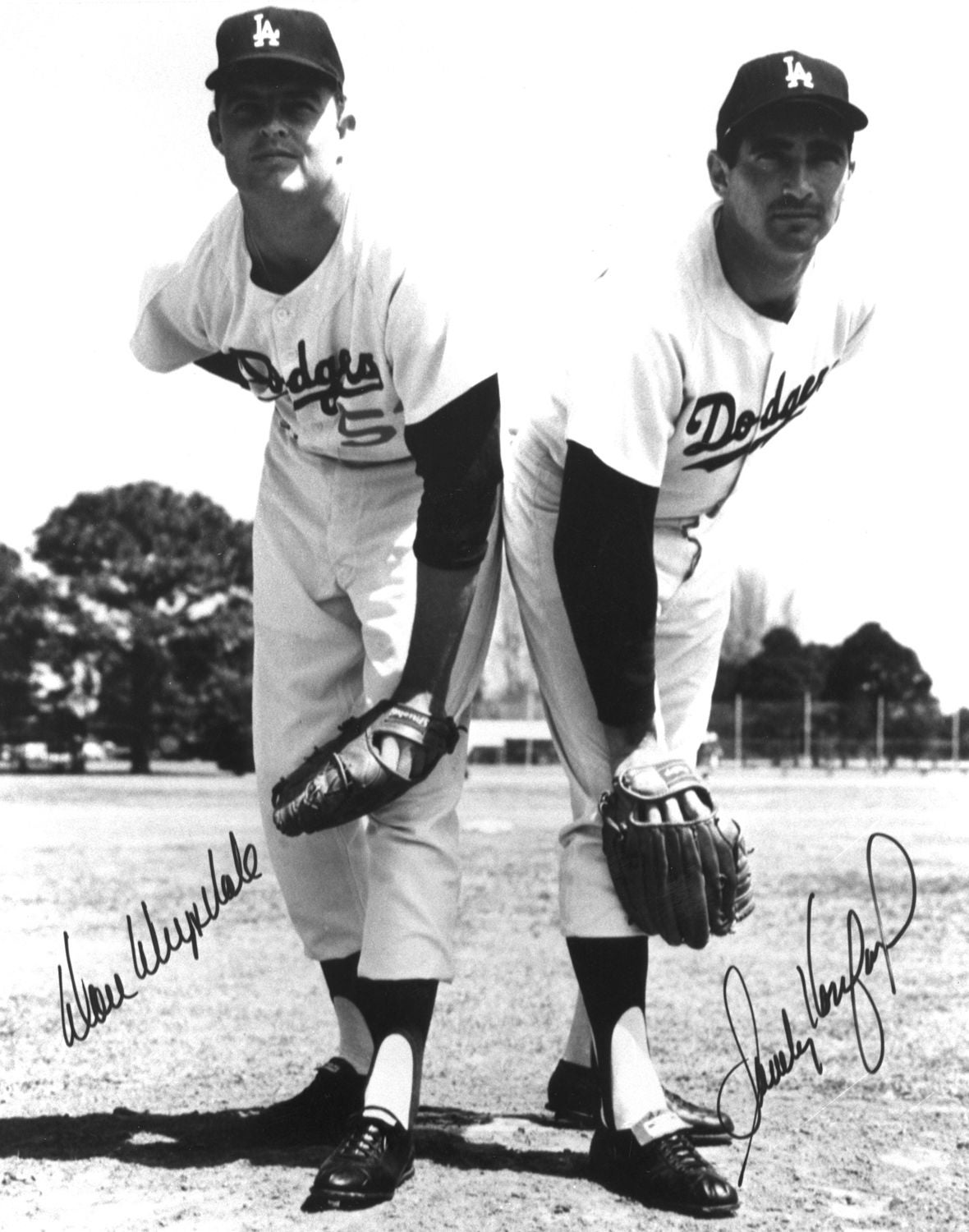
Once upon a time or 1966, Don Drysdale and Sandy Koufax held out and refused to show up for spring training. They were both looking for a better contract.
They held out for 32 days and signed eventually for $ 130,000 (Koufax) and $ 105,000 (Drysdale).
They Dodgers won 97 games and the NL pennant but lost to the Orioles in the World Series later that year.
Koufax was great: 27-9 with a 1.73 ERA & 27 complete games. On the other hand, Drysdale was a bit off form: 13-16 with a 3.42 ERA.
1947 and the Dodgers in Havana, Cuba
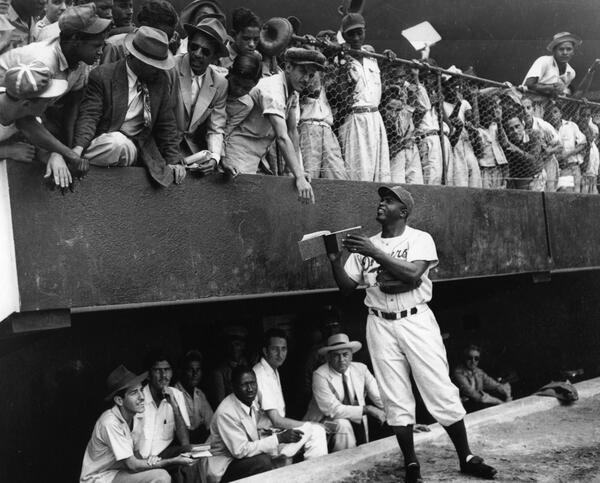
The Dodgers were not totally unfamiliar with Cuba, having previously used Havana’s La Tropical Stadium as their spring training site for the 1941 and ’42 seasons, before Rickey arrived from St. Louis. Wartime travel restrictions, however, ended that experiment. And as early as 1943, Rickey had shown interest in having heralded Cuban Leaguer Silvio Garcia become the first player to test major league baseball’s color barrier.
2013: Thank you Pope Benedict XVI
Thank you Pope Benedict XVI and continue to enjoy a very well deserved retirement.
Thursday, February 27, 2025
US vs Venezuela, Jake Tapper and more stories
Nobody likes Brandon
Nobody likes Brandon - American Thinker https://t.co/hw1vc6QrKv
— Silvio Canto. Jr. (@silvio_canto) February 27, 2025
Mayor Brandon Johnson of Chicago is getting a quick lesson on performance approval polls. It turns out that lousy mayors and governors get bad approval numbers. Here is the story:
In January 2023, shortly before the February Chicago mayoral elections, former Mayor Lori Lightfoot had a dismal 22% approval rating. Current Mayor Brandon Johnson’s approval has now sunk even lower, to only 6.6% in the latest poll, as issues such as rising crime concern residents of the Windy City.
In the latest poll from M3 Strategies, which surveyed 696 likely Chicago voters Feb. 20-21, 67% said that crime was one of the top three issues facing Chicago, followed by high taxes at 54% and inflation at 41%.
Who knew that voters concerned about crime, high taxes, and inflation would say “thumbs down” when talking about their mayor?
To be fair, I’m not sure what the mayor can do about inflation or taxes. However, the crime is all on him and his predecessor. They have tied the hands of the police, made excuses for criminals and now the place is a mess.
Another issue to remember is how the teachers’ union turned out to put Johnson in power. He was the candidate who opposed pro-charter school and school choice policies. He was their man and they put him in. It did a lot to demonstrate who runs Chicago but it didn’t do much to teach kids how to read, write, and multiply.
Sadly, Chicago is stuck with their man and his disastrous policies. Add to the formula a governor who is more interested in fighting Trump than making Chicago great again.
So the people of the Windy City will continue to be stuck in the hole that they are in. Elections have consequences, as we hear.
P.S. Check out my blog for posts, podcasts and videos.
We remember Elizabeth Taylor (1932-2011)
Taylor’s movie career stretched from the 1940's to the 1980's, from "Little women" to "Cat on a hat tin roof" to "Cleopatra" to many others.
She died in 2011.
P.S. You can listen to my show. If you like our posts, please look for ”Donate” on the right column of the blog page.
1936: 7-year old Shirley Temple signed a big contract
On this day in 1936, Shirley Temple got a new contract from 20th Century Fox. She was guaranteed $50,000 per film for the next 7 years.
Later in her life, she had a diplomatic career. Shirley Temple Black was named ambassador to Czechoslovakia by President Bush.
She died in 2014.
We remember Juan Delis and the 1955 Washington Senators
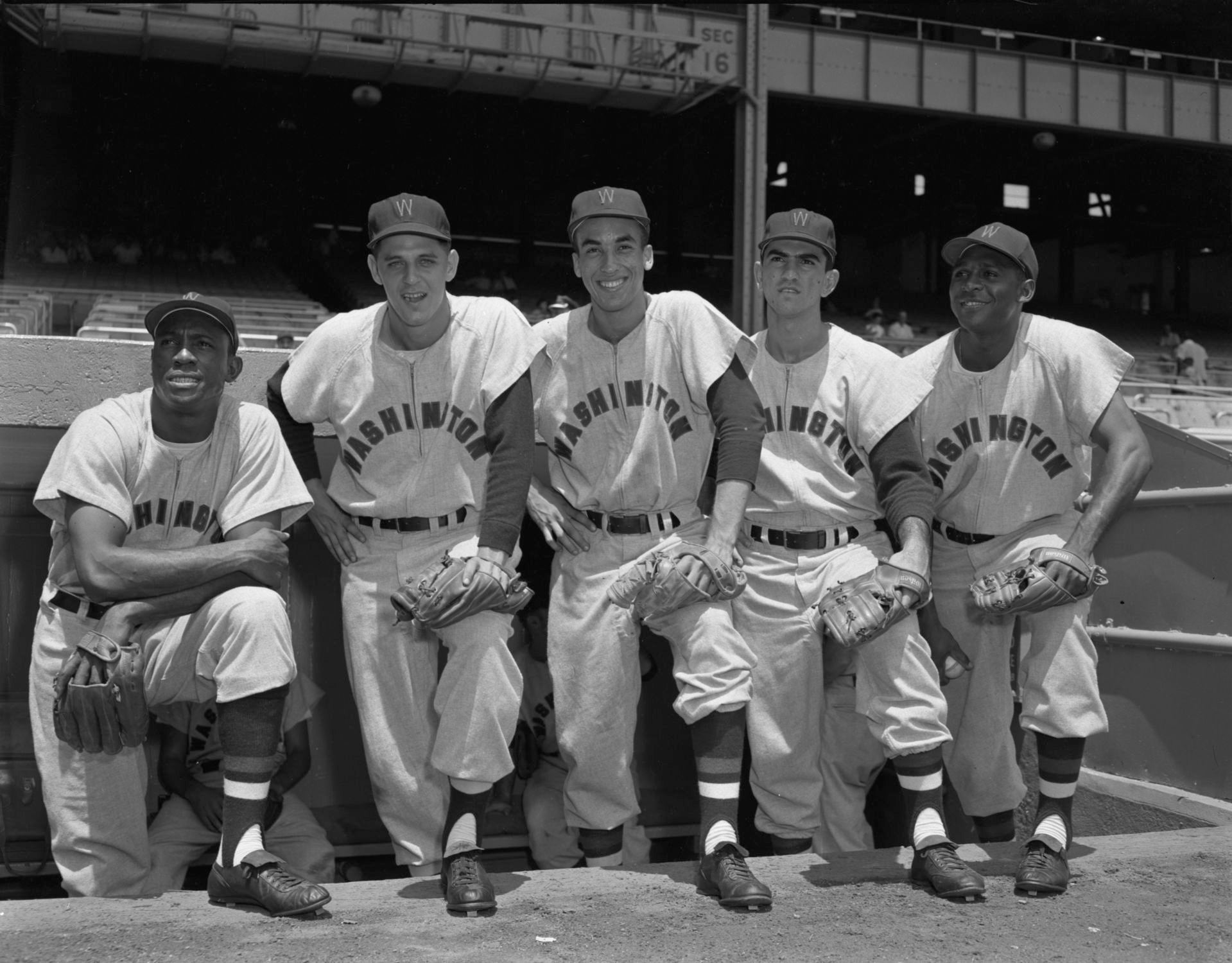
In the 1950’s, Juan was one of many Cubans who played with The Washington Senators.
In this photo, Juan (to the right) joined Carlos Paula, Pedro Ramos, Jose Valdivielso and Camilo Pascual in the 1955 team. Of course, Ramos and Pascual became very successful major league pitchers.
Wednesday, February 26, 2025
Trump's Cabinet meeting and a few other thoughts
Your ‘inseminated person’ should know
How is the governor of Wisconsin going to explain it to his mom? I’d love to hear how that one goes.
— Silvio Canto. Jr. (@silvio_canto) February 26, 2025
Your ‘inseminated person’ should know - American Thinker https://t.co/7ArpiXC7LQ
Well, let’s have a little fun and remember that one by The Beatles:
Let’s all get up and dance to a song
That was a hit before your mother was born
Though she was born a long long time ago
Your mother should know
They are crazy up in Wisconsin, especially at the Governor’s office. What are they smoking or putting in their coffee? Your guess is as good as mine, but the governor is proposing a change to how we refer to “mom,” having decided that “inseminated person” is a better descriptor. I couldn’t believe this story and had to read it twice to make sure it was true.
On the other side, here comes Doug Schoen, a sane Democrat who probably sends his mother a card purchased in the Mother’s Day section at your favorite store, has a message for the Democrats. This is the story:
If Democrats hope to right the ship and regain at least one chamber of Congress next year — or the White House in three — they must begin with a messaging strategy that speaks to the issues voters care about: the economy, public safety and border security.
They should start with the primary reason Trump won last November, the economy.
Trump made Americans’ economic pessimism and anger over inflation a centerpiece of his campaign, convincingly portraying Democrats as the party of elites who were out of touch with everyday Americans.
Yes, out of touch big time because most Americans, especially the ones I know, don’t refer to their mothers as an “inseminated person.” In fact, most of the men that I grew up with would punch you in the face if you referred to their mom in that way.
So what’s going on? It’s easy to say that they have not learned a thing about the election or the rejection of “woke.” More likely they are so invested in “woke” that it will take another defeat to drive home the point that calling a woman something like that is “super loco,” as my late Cuban mother used to say.
How is the governor of Wisconsin going to explain it to his mom? I’d love to hear how that one goes.
P.S. Check out my blog for posts, podcasts, and videos.
We remember Fats Domino (1928-2017)
We remember Antoine Domino, the great Fats Domino who was born in New Orleans on this day in 1928. He died in 2017 at age 89.
He was one of the early rockers and best entertainers ever. Some of his hits were: "Blue Monday", “Blueberry Hill” , “Ain’t that a shame” and "Walking to New Orleans".
You have to check out one of his many hits.
We remember Johnny Cash (1932-2003)

Like many of you, I learned a lot about Johnny Cash from that film "I walk the line". It probably introduced a lot of young people to his career and songbook.
Cash was born on this day in 1932 and died in 2003.
Cash was was one of the great male vocalists of the 20th century. His style and voice were very unique. Furthermore, he hung around with Elvis Presley, Carl Perkins and Jerry Lee Lewis in the early days of Sun Records and rock and roll.
Check out a Johnny Cash today song today. There are many to pick from.
1993: The first World Trade Center attack
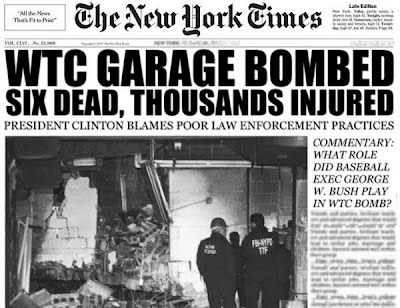
We remind you that this attack happened 10 years before the US invaded Iraq.
P.S. You can listen to my show. If you like our posts, please look for ”Donate” on the right column of the blog page.
We remember Bob Jagers (1922-2021)
Mr. Jagers was quite a celebrity in our area, a member of our parish and wonderful storyteller. For years, he visited the local schools and you could hear a pin drop when he spoke to youngsters learning about D-Day in their history classes. The kids loved him and called him back over and over.
To say the least, Mr. Jagers had quite a story to tell, from war stories to hitting a Bob Feller pitch during a baseball game in the Pacific theater. He saw Lou Gehrig, Joe DiMaggio, and Hank Greenberg play. How cool is that?
In October 1968, Bob was working for a U.S. auto manufacturer in Argentina. He ate lunch and tuned in U.S. Armed Forces Radio to hear Mickey Lolich and his favorite Detroit Tigers beat Bob Gibson’s Cardinals in game seven of the World Series. He once detailed Jim Nortrup’s triple over Curt Flood’s head, a key play in that game.
A few years ago, Bob published his story in a book called Whales of World War II:I was born in 1922 in Chicago, Illinois, and later moved to Grand Rapids, Michigan.
I graduated high school in Grand Rapids. I went to two years of Aquinas College in Grand Rapids before entering the war. I enlisted in the Navy in April of 1942. But they permitted me to finish my term.
In June of 1942 I was sent to Great Lakes naval training center, for my boot camp. After boot camp, I went to quatermaster signaling school .
Upon completion, we were asked what kind of ship we wanted to be on, and I said I wanted to be on a submarine. They interviewed me and gave me some exhaustive tests for submarine duty, and they said I was number 21. The next complement of sub sailors needed was of 20. If any of the previous 20 were rejected, or refused to go for some reason, then I would be selected.
Looking back 50 years, I was quite fortunate in that all 20 of them were selected. The next thing I knew I was on a train for amphibious training at Solomons Maryland.
I spent several months there, went aboard a training vessel, a LST training vessel on the Chesapeake Bay...
An LST is the slowest ship in the convoy. It travels maybe four or five knots, about six miles an hour. Not only do you travel from Bermuda to North Africa, but you have to zig zag. So I’m sure that the destroyers and destroyer escorts that were accompanying us really didn’t like to see the LST’s come along because the convoy moved very slowly.
We went to the straits of Gibraltar, landed at the naval base of Oran.
On page 109 of Whales of WWII, Robert recalls D-Day and his participation. He remembers the heroic work of U.S., U.K., and Canadian young men landing on the French coastline. It must have been an awesome day for a 22-year-old sailor.
Tuesday, February 25, 2025
Voz Media on Tuesday
📹 | ENTREVISTA a @silvio_canto, analista político: Abbott se opone a una ciudad regida por la ley islámica
— VOZ (@VozMediaUSA) February 26, 2025
Mira la transmisión completa AQUÍ 👉 https://t.co/a1sC3kSdf2
Reporta @23gustavovargas para VOZ News por Daystar pic.twitter.com/zJgnESXGg9
The day the bakery stopped baking
It was a bad day at a South Texas bakery, and I don’t mean that they burned your bread.
— Silvio Canto. Jr. (@silvio_canto) February 25, 2025
The day the bakery stopped baking - American Thinker https://t.co/6FiYxCPe0Z
Happy # 83 to Karen Grassle
She played the role of Mrs. Caroline Ingalls and became one of our very favorite TV mothers.
"Little House" was based on a series of books written by Laura Ingalls-Wilder. Laura was born in the late 1800's and published the books in the 1930's.
It was her family's story. The stories were about Pa, Ma, sister Mary and Almanzo, the young man she eventually married.
I have never read the books but the TV series was fabulous. The shows were extremely well written, serious and touched on real family issues.
It was a great show.
We remember Ron Santo (1940-2010)
He began his career with the Cubs in 1960 at age 20. From that debut to his retirement in 1974, he put together some great numbers: .277 career batting average, 342 HR, 2,254 hits & 1,331 RBI.
From 1963 to 1970, Santo averaged 29 HR and 106 RBI. He also led the NL in walks 4 times and won 5 Gold Gloves for his defensive work at third base.
Sadly, he died in 2010 and did not live to see his induction into the Hall of Fame in 2012.
World War II: Appeasement and the 1930's
World War II, episode 2:
Appeasement and the outbreak of war........click to listen.....
P.S. You can listen to my show. If you like our posts, please look for ”Donate” on the right column of the blog page.
Listen to "World War II, episode 2: Appeasement and the outbreak of war" on Spreaker.
Monday, February 24, 2025
The week in review with Bill Katz, editor of Urgent Agenda
No more ‘climate change’ Popes
The Catholic Church has two serious problems, from losing members to a current Pope who keeps making the leftist case for illegal immigration and climate change.
— Silvio Canto. Jr. (@silvio_canto) February 24, 2025
No more ‘climate change’ Popes - American Thinker https://t.co/IznJQuxBBS
As a lifelong Catholic, I am sorry to hear of the Pope’s health. I love my Catholic faith and no one does Easter (or Holy Week) like we do.
Who is going to be the next Pope? There are some strong candidates such as Cardinal Fridolin Ambongo Besungu, 65, from The Democratic Republic of the Congo:
President of the Symposium of Episcopal Conferences of Africa and Madagascar, Fridolin Ambongo Besungu made headlines when he rejected a controversial declaration of Pope Francis — with the papal blessing, no less.
The conservative Capuchin declared the doctrine of Fiducia supplicans — which allowed priests to bless unmarried and same-sex couples — null and void on the African continent. Besungu was able to achieve explicit blessing from Pope Francis in an emergency meeting in 2023 shortly after the release of that teaching, the Catholic Heraldreported.
A Besungu papacy would be seen as a sharp rebuke of the left-leaning principles of Pope Francis. The current pontiff made Besungu a cardinal in 2019.
Rebuke of Pope Francis? I like that with all due respect to the ailing Pope.
Another good choice would be Cardinal Wim Eijk, 71, from the Netherlands. He is regarded as one of the most conservative of the front-runners.
There is also an American on the list: Cardinal Raymond Burke, 76. He is a proponent of the Latin Mass and a public critic of Pope Francis’ liberal tendencies.
I love the Latin Mass. My father was an altar boy in Cuba and learned all those Latin lines that we don’t hear anymore.
No one knows who it will be because it all happens in secret and we just get to wait. No polls here.
The Catholic Church has two serious problems, from losing members to a current Pope who keeps making the leftist case for illegal immigration and climate change.
So stay tuned. The smoke will eventually go up and a new Pope will reveal himself in the balcony. I’d love to see one of these three men on the balcony.
P.S. Check out my blog for posts, podcasts and videos.
Happy # 69 Eddie Murray
Eddie broke in 1977 and turned into one of the most consistent hitters in major league history: .287 career batting average, 504 HR, 3,255 hits and 1,917 RBI.
Murray was a key piece of the teams that played in the 1979 and 1983 World Series. He hit 2 HR in game 5 of the 1983 World Series to clinch the title for Baltimore.
Remembering Luis Aguile (1936-2009)
We remember that Luis Aguile was born in Buenos Aires, Argentina, on this day in 1936. He died in 2009. His full name was Luis Maria Aguilera Picca.
Back in the 1960s, our family spent many cold winter nights in Wisconsin listening to “Cuando sali de Cuba“. It always put a tear in my parents’ eyes. As my father told me, Aguile was a pop music star circa 1960 and had no connection to Cuba. What inspired him to write this song? I don’t know but it became a favorite in “el exilio”
Thanks to the late Luis Aguile for that wonderful song!
P.S. You can listen to my show. If you like our posts, please look for ”Donate” on the right column of the blog page.
We remember Joe Lieberman
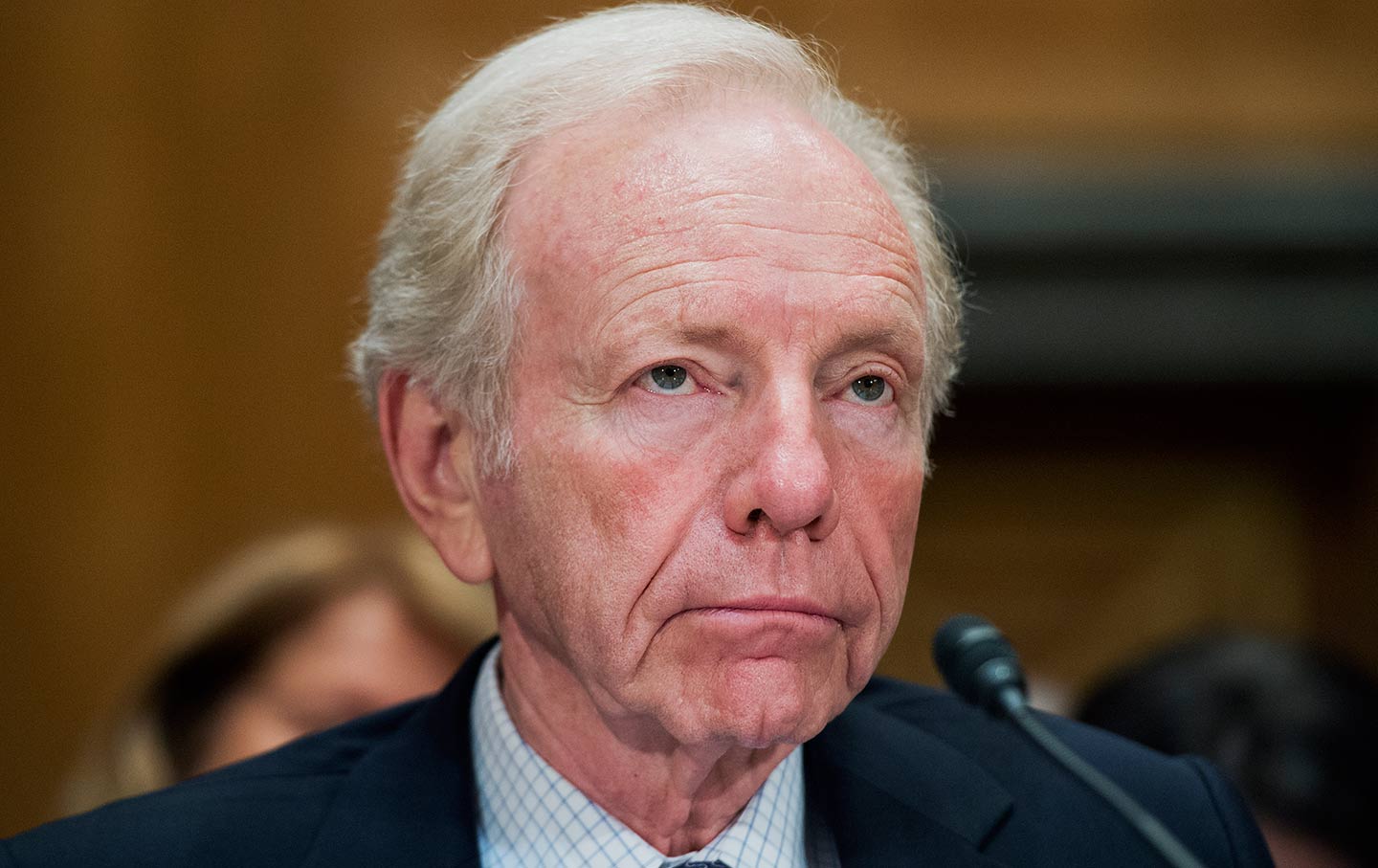
We remember Senator Lieberman for several reasons:
1) In 1998, he stood up in the US Senate and called out President Clinton's Oval Office behavior. Unfortunately, most Democrats, and specially the party's women, stayed quiet;
2) In 2000, VP Gore selected Senator Lieberman to be the party's VP nominee. We recall that the Gore-Lieberman ticket lost that election. Unlike VP Gore, who became unhinged, Senator Lieberman accepted the verdict and moved on;
3) In 2003-04, it was Senator Lieberman who tried to persuade Democrats to adopt a more realistic view of the Iraq War;
4) In 2006, Senator Lieberman was defeated in the Democrat Senate primary but won the election as an independent anyway; and,
5) Mr. Lieberman became a Trump supporter in 2017.
We remember him as maybe the last of the old Democrats.
The Liebermans wrote a good book about their 2000 campaign memories.
1996: A deadly weekend for US citizens over international waters
It happened in 1996:
Two small planes operated by a Cuban-American group were shot down by Cuban fighters over the waters north of Havana and the four people on board were missing, President Clinton and the U.S. Coast Guard said Saturday.Clinton said he had been briefed on “the shooting down Saturday in broad daylight of two American civilian airplanes by Cuban military aircraft.”“I condemn this action in the strongest possible terms,” Clinton told reporters in Seattle, Washington.The two planes with four people on board were twin-engine Cessna aircraft operated by the group “Brothers to the Rescue,” a Miami-based group of Cuban exiles funded by private donations. The group has flown hundreds of missions to spot Cuban rafters attempting to flee their island nations.Group founder Jose Basulto was on a third plane that escaped the gunfire and returned to Miami.Basulto said all three planes had radioed Cuban air traffic controllers to identify themselves and report their intentions to search international waters for Cuban refugees who may be on rafts.Basulto described seeing two Cuban MiG fighters approach them while they were at least 20 miles north of the Cuban coast, 8 miles into international waters. Shortly after that, he lost radio contact with the other two Cessnas.“I kept calling them both and heard no answer,” Basulto said. “At that time we decided to proceed north and go into the clouds for cover, because we feared that something dreadful had happened.”
…pledged Monday to work with Congress to pass the so-called Helms-Burton legislation which would tighten the existing U.S. embargo against Cuba.The president said he would ask Congress to permit him to use some of the approximately $100 million in frozen Cuban assets in the U.S. to compensate the families of the four missing Cuban-American pilots and crew members.Clinton also announced additional punitive measures, among them:tighter restrictions on the movement of Cuban officials in the United States; efforts to increase funding to help the U.S. government’s Radio Marti overcome Cuba’s jamming of its broadcasts; suspension of all commercial charter flights between the U.S. and Cuba.
Follow us: @AmericanThinker on Twitter | AmericanThinker on Facebook

